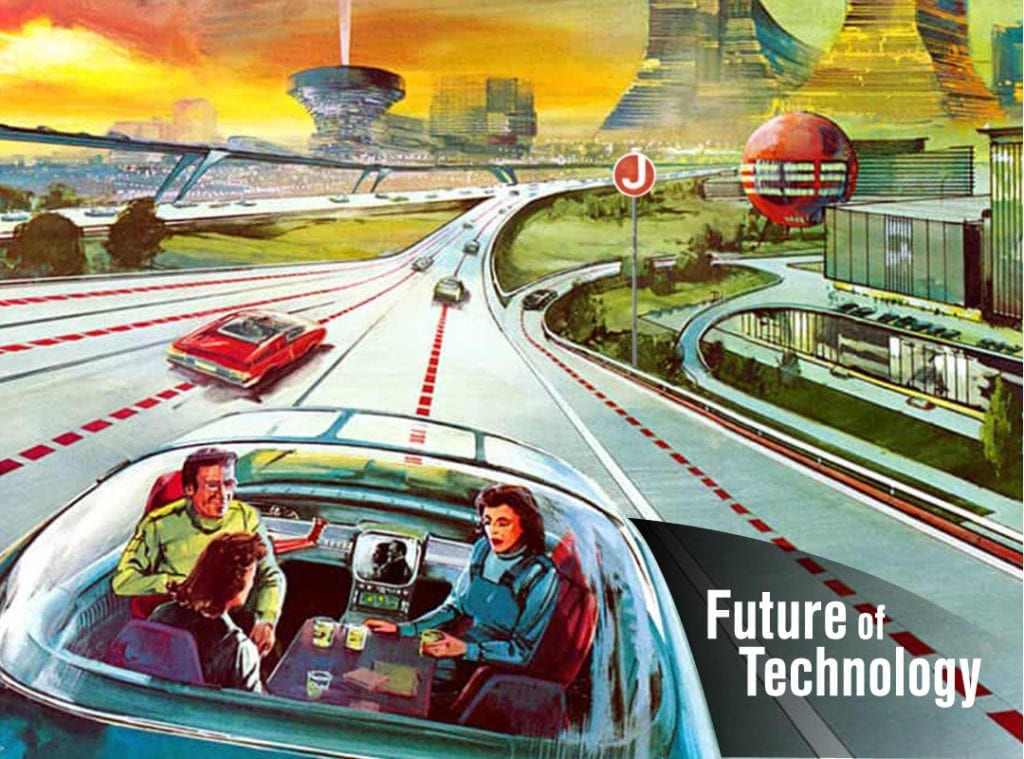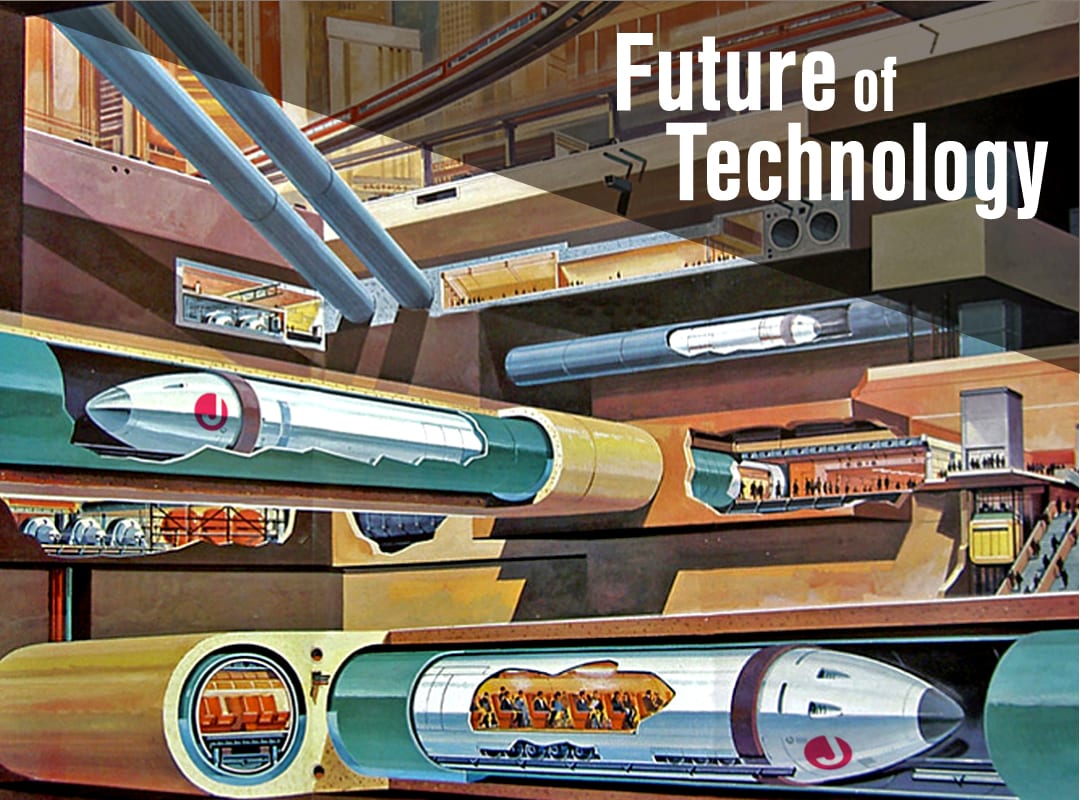You Can Create a Future for Your Technology, or You Can Let the Future of Technology Pass You By
Feel like there’s too much change in too short a time for you to wrap your mind around? Alvin Toffler coined the phrase “Future Shock” back in 1970 after the moon landing. He had no idea what more was coming. He thought that was crazy? In the last 15 years, there’s been more technological changes than in the previous 8,000 years of human existence.
There were 120 years between the advent of the industrial revolution and the invention of the light bulb, 90 years from the lightbulb to landing on the moon, with the creation of the World Wide Web only 22 years after that, and the modern challenges of the I.T. support guy along with it.
So if you feel you’re wandering in a wilderness of constant change and all you want is somewhere familiar to rest, you’re perfectly normal. I think it’s one of the reasons so many business owners are so damn cranky all the time.
You just want to be able to know that when you wake up tomorrow morning, your business will be the same as it was yesterday, just a little more efficient, a little more profitable, and a little more well-known. Instead, your paradigm keeps shifting without a clutch.
Twenty years ago, if someone had a complaint, they’d write a letter that you may or may not be expected to answer. Ten years ago, they’d send you an email and you’d have a few days to respond. Today, they’ll tweet about it and by golly, if they don’t get a response in an hour they are all over Yelp, Facebook and Instagram expressing their displeasure.
In 20 years, a 4200-year history of writing things down on clay tablets or sheets of papyrus has been upended by digital documents. Books, which were expensive and rare for centuries even after Gutenberg created movable type, are now free. No one with a modern business keeps a hand-written ledger book. Get out your checkbook in line at the grocery store and people behind you start rolling their eyes.
Your marketing options used to be nice and tidy up through the 80’s. You needed some printed materials. You sent some direct mail and you’d could advertise in print, on the radio, and on television.
Then the World Wide Web came along in 1991 and eventually you had to have a website. But it wasn’t too complicated; just have your marketing guy scan the brochure and the neighbor’s college kid would put in on the web.
Today, the Chief Marketing Technologist blog maintains a list of 131 types of marketing and a Marketing Technology Landscape Supergraphic representing 1,876 vendors in 43 categories of marketing tools that you can use to promote your business.
No wonder people are uncertain. There are few things that feel worse than not knowing what’s going to happen. It’s a sick feeling to anticipate yet another complicated, unavoidable change in the way things are done. Science says it’s good for our brains to learn new things, but it would be nice to spend that energy on fun stuff like learning to play the piano and not trying to figure out whether your office needs a router or an access point.
You’d think the rate of change would level off. That we’re so advanced now, there can’t be much more left to invent or discover. “Give me a breather and let me catch up!” Sorry, but Ray Kurzweil, acclaimed “futurist” and a Director of Engineering at Google, presents us with the Law of Accelerating Returns, where the rate of change in systems and technologies tends to increase exponentially. Forever? Probably not. But things sure do get uncomfortable during the big growth phase.
For now, while the rate of change in the rate of change is increasing, how will you ever keep up? Kurzweil predicts we’ll have computers inserted into our brains. Well, I’m not sure how popular that’s going to be, and it doesn’t seem to be in beta yet, so what are we going to do in the meantime?
The Technology Roadmap
There is absolutely no way you can learn and keep up with all of the technology needed to run your business. Ray Kurzweil has made some predictions that were astonishingly accurate but very big picture (the use of Wi-Fi, for one). It doesn’t help you know what you should be doing with your technology resources in the next six months.
You need a technology roadmap. A “Thomas Guide to High Tech” so to speak. Let me share with you my secrets to confidently navigating into the future:
Become an Early Adopter
When Microsoft introduces a new operating system, my team is the first to adopt it. Embrace the proven concept and purpose while eagerly anticipating the new interface and the new capabilities. This comes from knowing your foundations very, very well.
It seemed like Windows 10 was going to be a whole new thing, but the purpose of it (to give you access to programs and a way to manage them all on one device) is still there. You still need to open programs, manipulate files and save your work. It’s just wrapped in a slightly different package.
Occasionally you will go forward with something that doesn’t work out. But that will be a side step, not a setback. In technology, you can’t succumb to the temptation to test, evaluate, wait for multiple reviews and see what bugs regular users have discovered. There is a something new every 3 months, a big shift every 6 months and a major game- changer every 12 months. If you’re not first, or almost first, you’re last.
We don’t randomly try new things; we have a process for vetting vendors, testing software and applying it to our own systems before we ever roll it out to our clients. Our experience in doing this makes the process go much faster. We’ll fail faster, too, if needed. I never waste time on a losing proposition.
Also Stay with the Tried and True
It’s astonishing how many technology companies are using old technology. Some of my biggest competitors keep their clients on old tech (like Windows Server 2008 or Windows 7) until the vendor stops supporting the products because they are “tried and true;” they are “proven” technologies.
Look, I might wait and see how quantum computing works out before I recommend it to my clients, but upgraded operating systems, better networking tools, and new server platforms are not radically new technologies. You should always be ready to upgrade, get the newest version, and be as up-to-date as possible.
You know what I do stay with that is tried and true? The way I treat my clients and my team. To me, that is what is proven; I will never move away from handling clients with the utmost care. I will never stop building a team based on communication and giving the absolute best possible service.
Respecting the client’s needs and doing everything possible to meet them will never be outmoded at JIT Outsource.
Learn How to Learn
I can’t predict the exact characteristics of the new tools or technology, but I can predict that I and my team can learn how to use them. I don’t know exactly what’s going to happen, but I do know how to respond to it. I have processes in place for and my team to quickly understand and use new tools. Knowing how to learn, and rolling with the punches, are just part of being in the technology industry.
We use technology to learn how to use technology. It’s part of the technical team’s job to create articles for our internal knowledge base. The I.T. support team cross-trains with the web development team on website and digital marketing strategies. Everyone is learning something new all the time.
“The illiterate of the 21st Century will not be those who cannot read or write, but those who cannot learn, unlearn and relearn.” – Alvin Toffler
Follow the Leaders
Where does knowledge and experience come from?
Doing, first of all, but also modeling. Following the lead of someone who has already blazed a path, found the traps, and marked the path through the wilderness. That’s what road maps are for; to show you the way that others have taken so you can get there as efficiently.
It’s tough being on the front-end of technology – of boldly going where no one has gone before. There won’t be a road map. That’s why learning how to learn is so important. That’s why knowing what your foundation is built on is so important.
Everyone who is a leader is also someone else’s follower.
I follow and study the works of great businessmen and women and great technologists so that I can be a leader.
It’s why I’m here. To help create a technology roadmap for you and your company; to share with you my experience and wisdom and to be your guide in the technology wilderness.
If you’re feeling lost or overwhelmed, call me. I can show you how to can create a solid foundation for your business while constantly adapting to (and benefitting from) change.
Artist- Gunther Radtke




VIEW ALL